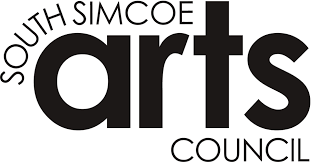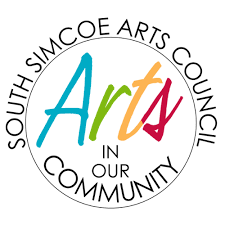Exhibition Statement - Left Behind: Forgotten Objects of the Past
- sarahhawley

- Jun 10, 2023
- 5 min read

Title: Left Behind: Forgotten Objects of the Past
Artist: Sarah Hawley
Date: June 27th – End of September 2023
Location: Museum on the Boyne, 250 Fletcher Crescent, Alliston, Ontario, L9R 1M1
Left Behind: Forgotten Objects of the Past is an exhibition that features a collection of photographs by Sarah Hawley on view at the Museum on the Boyne in Alliston, Ontario. From the 27th of June to the end of September 2023, the exhibit is on display in the upstairs loft area of the museum’s main building.
The museum is located on Fletcher Crescent, a side street in a quieter part of town, between the hospital and a local park with a baseball diamond. It is very much a grass roots institution, like many other small town museums. Upon my first visit, I sensed that this place was about remembering and learning about the roots of the community. It felt like a time capsule that records and shares the history of this place, highlighting important events, breakthrough discoveries and key figures from the area, who have made a difference in the world. These significant contributions have greatly impacted all fields in our way of life including business, agriculture, politics, science, medicine, etc. These innovations brought about change in our way of living that has led to what it is today. The museum continues to breathe life into these stories, keeping this rich history alive.
Knowing this about the museum has influenced the selection of imagery and the intent of this exhibition. Left Behind: Forgotten Objects of the Past is meant to simulate stumbling across antiques in the attic that were once cherished that now sit in a dark corner collecting dust. The sense of discovery, surprise, and the brief moment of pure happiness that is experienced when caught off-guard by finding a treasured item, while in search of something completely different is like that of bumping into an old friend.
This exhibition is focused on instilling that thrilling sense of discovery in visitors, whether it acts as a spark of remembrance, among older generations; stirring up forgotten memories from your past and stories that can be shared or presenting a learning opportunity for younger generations. It is meant to serve as an engaging educational experience to discover the machines and technology of yesterday that act as the roots where modern technology has grown from, while also recognizing the importance of history, knowing how we got here and where we came from. It offers a glimpse into the way of life of the past and an acknowledgement of how much we have changed and the similarities that still remain.

This exhibition consists of a small selection of mid-sized photographs displayed along one wall of the loft. Each image features an object that by today’s standards is considered an antique or is no longer commonly used. These items include an old sewing machine from the 1800’s, a stack of mailed handwritten letters, a film camera, a typewriter, and a fine porcelain tea cup, to name a few. Besides the fact that all the photographs feature antiques, there are other common traits. Each photograph was taken as an up close detail shot, enabling visitors to examine the items in greater depth, which pairs well with the way that the photographs are viewed in the space. Due to the small walking path on the outer edge of the loft, the viewer is confronted by the photographs, observing the images in an intimate and up close manner. This personal experience with the work reveals the imperfections of each object such as the aging and wear and tear that becomes apparent over time.
The idea of being forgotten and the aged appearance that comes across in each photograph is enhanced and achieved in the treatment of each image, using a variety of techniques. For the colour tone, some images feature a warm colour palette suggestive of a sepia tone, while others are black and white as a nod to early photography. Other methods used include careful consideration in the use of light and shadow to create a desired mood, as well as in-camera or post editing techniques. These techniques can have a significant impact on the final result of an image. In-camera techniques have been used in photography since the analogue film days and continue to be used today in the digital era. These methods include ICM or intentional camera movement, where the photographer deliberately moves the camera while an exposure is being taken, resulting in a faded, blurring or ghosting effect in an image.

Double exposure is a technique that layers at least two different exposures into a single image. This technique can be done either in-camera or after the photographs have been taken, by editing images together using computer software like Adobe Photoshop. This method allows photographers to achieve many different effects (for more info, please see my blog post on Double Exposure Photography). Other post editing techniques featured in this body of work include digitally applied filters, which again, uses computer software to alter the overall appearance of an image. By combining photographic techniques both new and old to achieve the desired visual effects, these images represent a bridging between traditional and modern photography and acts as a way to remember our past, keeping aspects of early photography alive and relevant, by practicing with these methods in the present, digital age. As a lover of history, it is my way of preventing loss and doing my part to carry a key part of our history into the future, which otherwise might end up left behind or forgotten, much like the objects featured in this exhibition.
Each object was found in different storage spaces of close friends, family and acquaintances. These storage spaces include basements, backrooms, spare closets and an attic. For me, each item was an exciting find and as an artist I was intrigued that the owner felt the object was important enough to keep, but not important enough to use or display. I also became curious about the past life of each item before it went into storage. Who owned it? What did they use it for? What did they make with it?
As previously mentioned above, the exhibition is situated in the upstairs loft area of the museum. It is appropriately on display up in the rafters or where the attic of the museum would be. Creating an opportunity for visitors to have their own personal experience of stumbling across the photographed antiques in the attic. This exhibit will be accompanied by an exhibition of another photographer's work along with other images and artifacts from the museum that are on permanent display in that space.

PLEASE NOTE: that the exhibitions in the upstairs loft area of the museum has limited access via a narrow staircase only (no elevator or other alternate access is available). For more information about the museum please visit: https://www.newtecumseth.ca/en/parks-recreation-and-culture/museum-on-the-boyne.aspx
This exhibition was made possible through a program offered by the South Simcoe Arts Council (SSAC) known as Arts in Our Community (AiOC). AiOC is a program that partners with local businesses and showcases artwork by local artists. The program is free for SSAC members to participate and the SSAC takes care of any artwork sales and inquiries. They also post artwork images from the exhibition on their website to increase exposure. To learn more, please visit: https://southsimcoeartscouncil.com/exhibits/aioc-details
I would like to thank and acknowledge the South Simcoe Arts Council and those directly involved with the Arts in our Community program. I appreciate all the hard work of those involved, who make this program possible. A special thank you to Museum on the Boyne for participating in the AiOC program by allowing the SSAC to use their wall space to showcase the work of local artists. I was amazed by the positive and friendly response of the staff on site and it was a pleasure to work with you. It truly is a wonderful museum.
For more information about SSAC, please visit their website at: https://southsimcoeartscouncil.com/









Comments